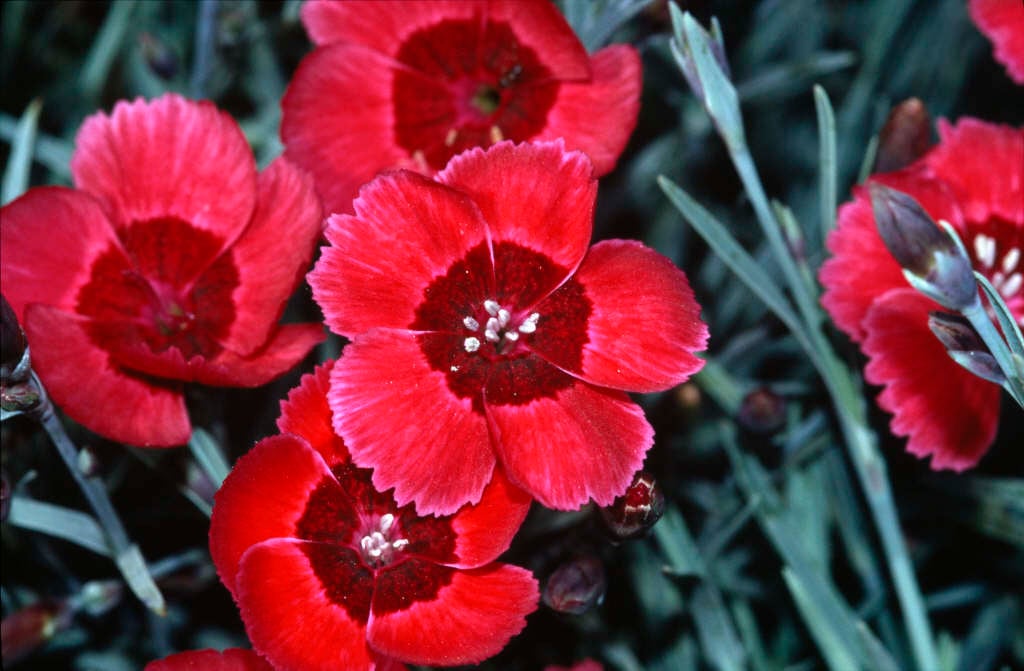Dianthus 'Red Star'PBR (p)
pink 'Red Star'
A compact plant with grey foliage, and single deep reddish-pink flowers, with a deep red central blotch and conspicuous white stamens
Size
Ultimate height
Up to 10cmTime to ultimate height
2–5 yearsUltimate spread
0.1–0.5 metresGrowing conditions
Moisture
Well–drainedpH
Alkaline, NeutralColour & scent
| Stem | Flower | Foliage | Fruit | |
| Spring | Green Grey Silver | |||
|---|---|---|---|---|
| Summer | Pink Red | Green Grey Silver | ||
| Autumn | Green Grey Silver | |||
| Winter | Green Grey Silver |
Position
- Full sun
Aspect
South–facing or East–facing or West–facing
Exposure
Exposed or Sheltered Hardiness
H6Botanical details
- Family
- Caryophyllaceae
- Native to GB / Ireland
- No
- Foliage
- Evergreen
- Habit
- Bushy
- Potentially harmful
- Humans/Pets: Skin allergen, wear gloves and other protective equipment when handling. For further information and contact numbers regarding pets, see the HTA guide to potentially harmful plants
- Genus
Dianthus can be annuals, evergreen perennials or subshrubs with narrow, often greyish leaves and showy flowers that are frequently fragrant
- Name status
Accepted
- Horticultural Group
- Pinks are hardy, evergreen perennials which make compact mounds or mats of usually greyish leaves, with up to six, usually fragrant, single or double, medium-sized flowers per stem in early and mid-summer
How to grow
Cultivation
Grow in a well-drained, neutral to alkaline soil in full sun. Prefers a soil enriched with well-rotted manure or garden compost and an application of a balanced fertiliser in spring
Propagation
Propagate by softwood cuttings of non-flowering shoots in summer or by layering after flowering
Suggested planting locations and garden types
- Cottage and informal garden
- Gravel garden
- Patio and container plants
- Rock garden
- City and courtyard gardens
- Coastal
- Flower borders and beds
- Ground cover
- Banks and slopes
Pruning
Deadhead regularly to prolong flowering
Pests
Diseases
May be susceptible to powdery mildews, a rust, a virus and fusarium wilt
Get involved
The Royal Horticultural Society is the UK’s leading gardening charity. We aim to enrich everyone’s life through plants, and make the UK a greener and more beautiful place.
